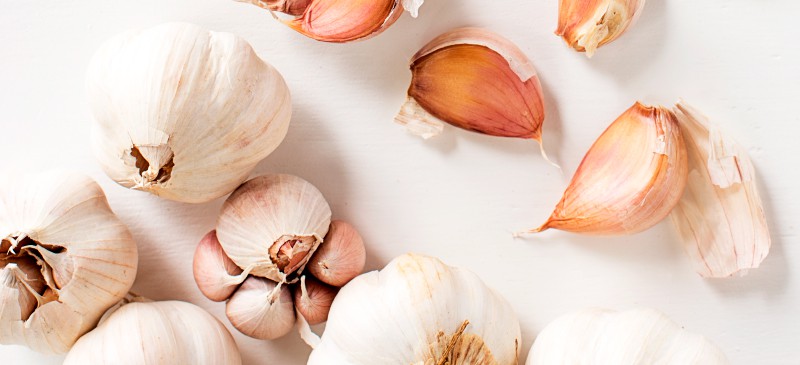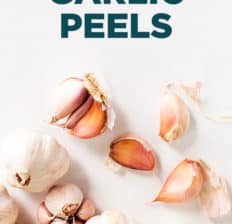This Dr. Axe content is medically reviewed or fact checked to ensure factually accurate information.
With strict editorial sourcing guidelines, we only link to academic research institutions, reputable media sites and, when research is available, medically peer-reviewed studies. Note that the numbers in parentheses (1, 2, etc.) are clickable links to these studies.
The information in our articles is NOT intended to replace a one-on-one relationship with a qualified health care professional and is not intended as medical advice.
This article is based on scientific evidence, written by experts and fact checked by our trained editorial staff. Note that the numbers in parentheses (1, 2, etc.) are clickable links to medically peer-reviewed studies.
Our team includes licensed nutritionists and dietitians, certified health education specialists, as well as certified strength and conditioning specialists, personal trainers and corrective exercise specialists. Our team aims to be not only thorough with its research, but also objective and unbiased.
The information in our articles is NOT intended to replace a one-on-one relationship with a qualified health care professional and is not intended as medical advice.
Top 6 Reasons to Keep Garlic Peels & Onion Skins
December 6, 2021

If you’re a believer in “nose-to-tail cooking,” you’ll probably also be interested in what’s called “root-to-stem” cooking. Both of these practices involve using as many parts as possible of the groceries you buy, grow or even raise, whether animal-derived foods or plants — such as garlic peels.
Garlic and onions are staples in many people’s kitchens — and for good reason, considering they’re full of both flavor and nutrients. For example, not only does garlic taste great, but garlic benefits for your health include fighting infections and supporting heart health.
Can you eat garlic peels? What about onion skins?
Not exactly, but that doesn’t mean you should toss them in the trash either. There are plenty of reasons to keep both onion skins and garlic peels, such as to infuse flavor into your recipes and even for composting and feeding your plants.
Why You Should Save Garlic Peels and Onion Skin
As one cook from Food and Wine puts it, “Whatever you do, don’t throw away those garlic and onion skins. Hang on to them and get all the flavor you can from your groceries—it’s good for the environment, your tastebuds, and your wallet.”
Garlic peels have a signature taste and smell just like garlic cloves do thanks to the presence of the compound called allicin. Allicin is packed with benefits, including the ability to protect cells against free radical damage and promote heart health.
The problem with eating the peels is their “papery” texture, which makes them a potential choking hazard.
You can still utilize the peels for their flavor and reap the rewards of their nutrients too. The same goes for onion skins. They also have a tough exterior that isn’t very pleasant to eat, but they do a great job at adding an oniony taste to recipes like stocks, stews and braises.
Both garlic and onions are “alliums,” meaning they are members of the Amaryllidaceae plant family. This plant family includes lots of different veggies, including:
- various onions
- black garlic
- white/pink garlic
- chives
- scallions
- leeks
There are more than 700 species in this plant family, many of which are packed with protective phytonutrients.
Garlic and onion peels are rich in nutrients, such as:
- vitamins A, C and E
- potassium
- calcium
- phosphorus
- antioxidants and flavonoids
- quercetin
- organosulfur compounds
- allyl cysteine
- alliin
- allicin
- allyl disulfide
Quercetin is considered to be a potent antioxidant and anti-inflammatory compound that can fight oxidative stress. Along with other antioxidants and compounds found within alliums, it can help fight the aging process, boost immunity, and support healthy cholesterol levels and cardiovascular functions.
These nutrients are present inside these veggies as well as in their skins and peels.
As the Farmers’ Almanac explains, “Plants are stationary by nature, producing everything they need to defend, protect, and heal themselves. Therefore, it makes sense that plants would concentrate many of their protective properties in the outer coverings.”
Top 6 Uses
If you plan to use garlic peels and onion skins when cooking, such as if making broth, it’s best to buy organic varieties whenever possible. The outer skins of these veggies can hold on to pesticides that are sprayed on the crops, but purchasing organically grown vegetables ensures these chemicals aren’t used.
What can you do with garlic husks? Below are some popular garlic peels uses, most of which also apply to onion skins too:
1. Add them to recipes like soups and grains to boost the flavor
When you’re making stews or soups, use the skins and peels to add more depth of flavor. Some cooks find that long-simmered garlic gloves taste a lot like roasted garlic.
Cut an onion or garlic bulb in half, and throw the whole half into the pot, including the skin and peels. (You don’t need to remove the cloves from the bulb to do this.) Once the recipe is done cooking, remove the skins and peels.
You can use the same method when making grains, such as wild rice or quinoa. Mix in some peels and onion skins when the grains are simmering, and then remove them when the grains are done cooking.
Some people mix finely chopped skins and peels into breads and savory baked goods, such as scones or biscuits. Use a mortar and pestle to finely grind the skins and peels, which makes the texture mostly unnoticeable.
If you’re using garlic and onions but don’t have a use for the skins and peels right away, keep them for later by storing them in a plastic bag in the freezer.
2. Use them to make stock
These flavorful scraps make great additions to either beef, chicken, fish or vegetable stocks. To infuse them into stocks, put them in a large pot, cover them with water by at least one inch, and then simmer for several hours with other ingredient,s like herbs, vegetables, mushrooms, and perhaps bones or ligaments if your’e making traditional bone broth.
Strain the scraps out, and save the liquid to either sip on or cook with.
3. Keep the peels on when roasting to lock in flavor
Keep the skins on your garlic when you roast it to lock in flavor and protect protect delicate nutrients, such as antioxidants, that can become damaged by high heat.
4. Make an anti-inflammatory tea
Boil onion skins for 10–20 minutes in a pot, and then strain and sip on the liquid as if it’s a healing tea or infusion. This is known to help reduce muscle cramps, and some even find that it can assist in getting good sleep.
5. Soothe irritated skin
If you have itchy or inflamed skin, applying a tonic made with steeped onions and garlic skins may help to reduce symptoms due to these veggies’ natural antimicrobial, anti-inflammatory and antifungal properties. Make a topical tonic by following the same directions above that you would use to make tea.
Apply the liquid to your skin for about 10 minutes, and allow it to seep in. This can potentially help reduce itching and problems like athlete’s foot — plus it might possibly reduce scarring.
6. Compost them or use as plant fertilizer
If you don’t have any culinary or topical uses for garlic peels, you can always save them to add to compost. Some gardeners even like to water their crops and plants with garlic and onion stocks/infusions to help provide the plants with extra nutrients — such as potassium, calcium and phosphorus — which can help plants thrive.
Garlic/onion fertilizer can be used during the seedling, vegetative and flowering, and fruiting stages of growing plants. Additionally, the same from fertilizer doubles as a natural insect repellent that can protect plants from being eaten.
How do you use garlic peels on plants? Make the following infusion recipe, and then water your plants with the liquid as you normally would.
- In a glass jar that has a lid, mix about 1 liter of water with 1/3 to 1/2 of a whole garlic bulb, including peelings.
- Mix thoroughly, seal and shake.
- Let it sit for about 24 hours in a cool, dry area, away from sunlight. Remove the peels, then your infusion is ready to be used.
Risks and Side Effects
Is garlic peel poisonous? It’s not poisonous and unlikely to be dangerous to eat, however there’s risk involved in eating the peels because of their texture.
The peels/skins can potentially be choking hazards due to their tough, papery texture. Therefore it’s advised that you either grind them to make them easier to eat or remove them from recipes before serving. (The flavor will remain even after the peels are taken out.)
If you have an allergy to any allium veggies, avoid consuming the skins and peels of onions and garlic, which can trigger a reaction just like eating the actual veggies would.
Conclusion
- Not only do they taste great, but garlic peels and onion skin are rich in antioxidants, vitamins and minerals.
- They also contain natural antifungal and antimicrobial compounds, meaning they provide many of the same benefits as eating garlic and onions.
- Garlic peel and onion skin uses include making nutrient-rich stocks, soups, grains, teas, topical infusions, fertilizers and compost.


